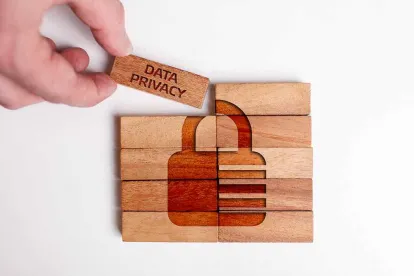In Jim Hawk Truck-Trailers of Sioux Falls, Inc. v Crossroads Trailer Sales & Service, Inc., et al., Judge Schreier provides a useful roadmap for navigating electronically stored information (ESI) when deciding Defendant’s motion to compel, among other things, the production of documents responsive to seven ESI search terms.
Background
In March 2020, Jim Hawk Truck-Trailers of Sioux Falls, Inc. (Hawk) brought suit against Crossroads Trailer Sales & Service, Inc. (Crossroads) and nine of its former employees interposing claims for misappropriation of trade secrets, breach of the duty of loyalty, tortious interference with businesses relations and employee relationships, civil conspiracy, unjust enrichment, unfair competition, and defamation. Hawk timely served Interrogatories and Requests for Production. The parties then engaged in extensive back in forth and meet and confers regarding various discovery disputes. See generally Docket 105-1. When amicable efforts broke down, Hawk filed a motion to compel, among other things, the production of documents resulting from seven ESI search terms. See Docket 105 at 1-3. Crossroads objected on the basis that the search terms were overbroad, unduly burdensome, not proportional to the needs of the case, and unreasonably cumulative and duplicative. Docket 110 at 19.
Legal Standard
The Court began its analysis by detailing the broad scope of discovery under Rule 26 of the Federal Rules of Civil Procedure (FRCP). Specifically:
Parties may obtain discovery regarding any nonprivileged matter that is relevant to any party’s claim or defense and proportional to the needs of the case, considering the importance of the issues at stake in the action, the amount in controversy, the parties’ relative access to relevant information, the parties’ resources, the importance of the discovery in resolving the issues, and whether the burden or expense of the proposed discovery outweighs its likely benefit. Information within this scope of discovery need not be admissible in evidence to be discoverable.
Rule 26(b)(1). Like other discovery, ESI discovery is governed by this same broad scope.
The Court went on to note that if a party does not produce requested documents, and the requesting party moves for an order compelling production (Rule 37(a)(3)(B)), the moving party must make a threshold showing that the requested information falls within the scope of discovery under Rule 26. In this regard, the Court noted that “mere speculation” about whether the information is useful is not sufficient; litigants seeking to compel discovery must describe with a reasonable degree of specificity the information sought and its importance to the litigation. Then, if the requesting party demonstrates a threshold showing of relevance, the burden shifts to the resisting party to show specific facts demonstrating the discovery sought is not relevant or is overly broad, burdensome, or oppressive. Here, too, the articulation of mere conclusory objections that something is “overly broad, burdensome, or oppressive” is insufficient to carry the resisting party’s burden. When dealing with ESI, an additional objection is available to the resisting party: the ESI is “not reasonably accessible because of undue burden or cost.” Rule 26(b)(2)(B). According to the Court, “reasonably accessible” refers to the degree of effort required to access the information, not simply the accessibility of the material’s format.
The Court observed, however, that even where the ESI requested is not reasonably accessible, discovery may nevertheless be ordered “if the requesting party shows good cause,” considering the three limitations set forth in Rule 26(b)(2)(C)* In addition to the three limiting factors of Rule 26(b)(2)(C), courts have adopted the seven-factor test outlined in the Advisory Committee notes to determine whether there is good cause. These factors are: (1) the specificity of the discovery request; (2) the quantity of information available from other and more easily accessed sources; (3) the failure to produce relevant information that seems likely to have existed but is no longer available on more easily accessed sources; (4) the likelihood of finding relevant, responsive information that cannot be obtained from other, more easily accessed sources; (5) predictions as to the importance and usefulness of the further information; (6) the importance of the issues at stake in the litigation; and (7) the parties’ resources.
Application and Analysis
With the foregoing standards in mind, the Court applied them to the instant dispute. Specifically, Hawk requested Crossroads conduct an ESI search of various devices for 13 individuals by applying 99 different search terms to the sources of data. Crossroads completed that exercise using 92 of the 99 terms and produced responsive documents. Crossroads contends that the remaining seven search terms dramatically increased the volume of ESI to be reviewed. Specifically, these seven terms result in an additional 42,216 unique documents for review. And so, the issue before the Court was not about the accessibility of the raw data. Rather, it involved whether Crossroads’ burden and expense in reviewing and winnowing the search results constituted an undue burden or cost. Relevant to deciding that issue was the cost estimate Crossroads and its ESI vendor provided: $3,500 to process and apply analytics to the additional data; and a figure in excess of $114,000.00 attributable to attorney review time – estimates Hawk did not dispute. Docket 110 at 16-17, Docket 105 at 8-11,15, Docket 113 at 8-9. Instead, Hawk argued the additional expenses were proportional to the needs of the case because the search terms were pulled from a discrete six-month period. Docket 113 at 9.
The Court found Hawk’s argument unpersuasive given it is the volume of resulting documents, not the period of time to which these search terms are applied, that results in burdensome costs. And so, the Court held that based upon these additional costs, the ESI resulting from the seven additional search terms in dispute was not “reasonably accessible” or properly discoverable in the first step of the Court’s analysis. The Court then explored whether Hawk demonstrated good cause sufficient for the Court to order the discovery, nonetheless.
Good Cause Exception
The Court noted that “[a] court should not treat the ‘good cause’ factors as a checklist.” Rather, it is critical that a Court considers the factors by relative importance. That said, the Court made the following findings:
the discovery request was sufficiently specific because the search terms at issue were specifically laid out; a fact favoring Hawk.
the second, fourth, and fifth factors favored Crossroads. Specifically, there had been extensive discovery including documents produced in response to 92 of 99 proposed search terms of 13 employees’ data and Crossroads’ ESI vendor asserted that the continuous active learning (CAL) model it used on that review predicted a relevance rate of 5-7% – a fact Hawk did not dispute. Rather, Hawk argued that Crossroads could not “represent with any degree of certainty, that there will be no discoverable documents produced from these searches” – an argument the Court found unpersuasive.
Finally, although the claims in this case were of substantial importance to the parties, they were not a matter of public concern.
And so, where, as here, Hawk failed to show a heightened likelihood that new and relevant information might be discovered using the search terms in dispute (the factor the Court determined most important among the “good cause” factors based on the facts before it) and the substantial burden and expense required to produce the ESI documents sought, the Court denied the motion to compel, concluding Hawk failed to show good cause for the discovery of documents that were not reasonably accessible.
Conclusion
Although the scope of discovery under the Rule 26 is broad, it is not limitless. In today’s data-centric world, often the volume of ESI means that an objection to production can be predicated upon a claim that the requested ESI is not reasonably accessible due to burden or costs attendant to collection, processing, review, and production. When faced with such an objection, if inclined to make a motion to compel that discovery, it is critical to identify for the Court with specificity the need for the requested information, analyze each of the seven good-cause factors, and be prepared to persuade the Court that the otherwise burdensome and costly discovery is proportional to the needs of the case.
*That provision of Rule 26 reads: When Required. On motion or on its own, the court must limit the frequency or extent of discovery otherwise allowed by these rules or by local rule if it determines that:
(i) the discovery sought is unreasonably cumulative or duplicative, or can be obtained from some other source that is more convenient, less burdensome, or less expensive;
(ii) the party seeking discovery has had ample opportunity to obtain the information by discovery in the action; or
(iii) the proposed discovery is outside the scope permitted by Rule 26(b)(1).



 />i
/>i

